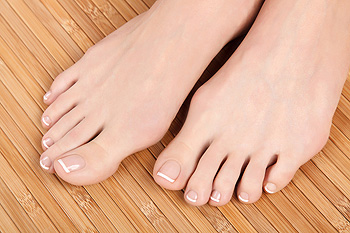
Connellsville

 One of the seven tarsal bones that are located in the foot is known as the cuboid bone. If you incur an injury to the surrounding joints and ligaments, you may have what is referred to as cuboid syndrome. A common symptom of this condition may often be pain that is experienced in the middle of the foot or at the base of the toes. An injury that occurs suddenly may cause the bones in the center of the foot to dislocate, cuboid syndrome develops when these bones are out of alignment. Common symptoms may include swelling, increased pain in the foot while walking, and tenderness and sensitivity on the sole of the foot. Research has shown that many athletes may tend to suffer from this ailment and the condition may worsen as the pain is often ignored. Patients who walk inward may be more susceptible in developing cuboid syndrome, which may often be a result of the cuboid bone gradually shifting out of place. If you suffer from this condition, it’s advised to seek counsel with a podiatrist to obtain the proper treatment.
One of the seven tarsal bones that are located in the foot is known as the cuboid bone. If you incur an injury to the surrounding joints and ligaments, you may have what is referred to as cuboid syndrome. A common symptom of this condition may often be pain that is experienced in the middle of the foot or at the base of the toes. An injury that occurs suddenly may cause the bones in the center of the foot to dislocate, cuboid syndrome develops when these bones are out of alignment. Common symptoms may include swelling, increased pain in the foot while walking, and tenderness and sensitivity on the sole of the foot. Research has shown that many athletes may tend to suffer from this ailment and the condition may worsen as the pain is often ignored. Patients who walk inward may be more susceptible in developing cuboid syndrome, which may often be a result of the cuboid bone gradually shifting out of place. If you suffer from this condition, it’s advised to seek counsel with a podiatrist to obtain the proper treatment.
Cuboid syndrome, also known as cuboid subluxation, occurs when the joints and ligaments near the cuboid bone in the foot become torn. If you have cuboid syndrome, consult with Dr. Arnold Tarpley, Jr. from Tarpley Foot and Ankle Center. Dr. Tarpley will assess your condition and provide you with quality foot and ankle treatment.
Cuboid syndrome is a common cause of lateral foot pain, which is pain on the outside of the foot. The condition may happen suddenly due to an ankle sprain, or it may develop slowly overtime from repetitive tension through the bone and surrounding structures.
Causes
The most common causes of cuboid syndrome include:
Symptoms
A common symptom of cuboid syndrome is pain along the outside of the foot which can be felt in the ankle and toes. This pain may create walking difficulties and may cause those with the condition to walk with a limp.
Diagnosis
Diagnosis of cuboid syndrome is often difficult, and it is often misdiagnosed. X-rays, MRIs and CT scans often fail to properly show the cuboid subluxation. Although there isn’t a specific test used to diagnose cuboid syndrome, your podiatrist will usually check if pain is felt while pressing firmly on the cuboid bone of your foot.
Treatment
Just as the range of causes varies widely, so do treatments. Some more common treatments are ice therapy, rest, exercise, taping, and orthotics.
If you have any questions, please feel free to contact one of our offices located in Uniontown, and Connellsville, PA . We offer the newest diagnostic and treatment technologies for all your foot care needs.